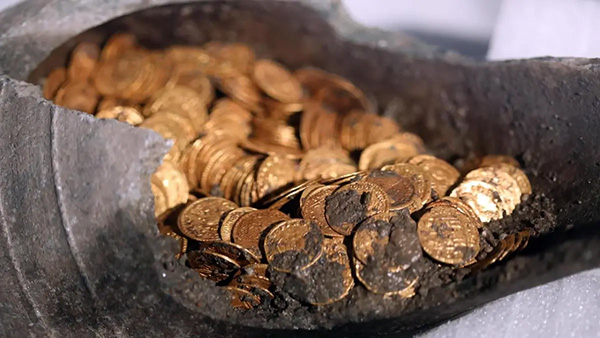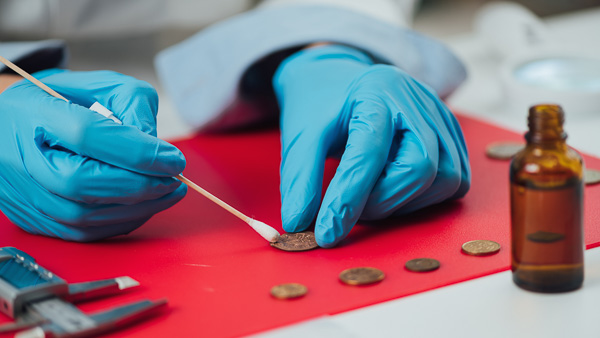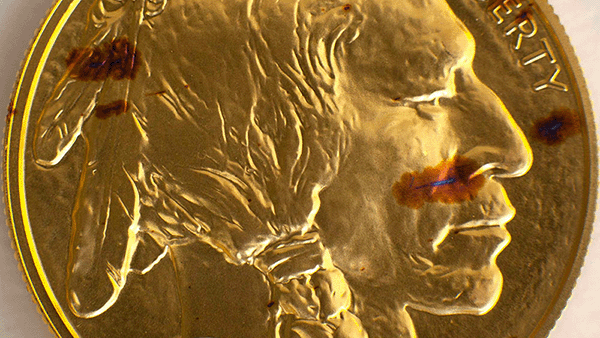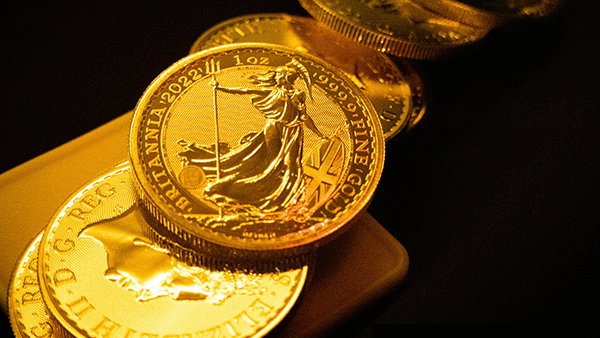How To Clean A Gold Coin
Why Clean Gold Coins

Gold coins are valuable and hold historical and sentimental significance for collectors. While pure gold doesn't tarnish and is highly resistant to corrosion and oxidation, gold coins are generally alloyed with some other metals, such as copper or silver, to increase their durability. These alloyed gold items may be slightly more prone to tarnishing, but it is still minimal compared to other metals.
From Silver Bullion's perspective, investment-grade gold bullion does not require cleaning to maintain its value, and a less shiny gold coin is not less valuable. While some bullion dealers may discriminate against gold coins based on their appearance, we do not, and we welcome the sellback of gold bullion to us.
However, should you have a strong preference to keep your gold coins shiny and clean, we provide some practical tips in this article on how you can safely clean your bullion coins using commonly available household items and following recommended cleaning processes.
How to Clean a Gold Coin
Cleaning gold coins requires a gentle touch and careful attention to preserve their value and appearance. Follow these simple steps to safely clean your gold coins:
1. Gather Necessary Supplies: You will need warm water, a plastic container, and a soft towel.
2. Create a Cleaning Solution: Fill the plastic container with warm water and add a few drops of mild dish soap. Avoid using harsh chemicals or abrasive cleaners that can harm the coin's surface.
3. Soak the Coins: Place the gold coins in the dish soap cleaning solution and let them soak for a few minutes in warm water. This will help loosen any dirt or debris that may be stuck to the coins.
4. Gently Clean: Use a soft-bristled toothbrush or a soft cloth to lightly scrub the coins. Be careful not to apply too much pressure as it can scratch or damage the surface.
5. Rinse with Water: After cleaning, rinse the coins thoroughly with clean water. This is important to prevent any chemical reactions with the gold, which can tarnish or discolor the coins.
6. Dry Carefully: Use a soft towel or paper towel to gently dry the coins. Avoid rubbing or using excessive force, as it can cause scratches.
Remember, improper cleaning methods can potentially devalue your gold coins. Avoid using metal polishes, silver dips, or abrasive materials. If you are unsure about the cleaning process, consult a coin dealer or expert for professional assistance. By following these steps, you can effectively clean your gold coins while preserving their value and appearance.

Common Aesthetic Issues with Gold Coins
Beyond dirt and grime, the following are several other common aesthetic issues that can affect gold coins. However, as gold bullion coins are minted for investment purposes, Silver Bullion does not discriminate against coins for such blemishes as we prioritize the weight and purity of the coins.
Copper spots
Copper spots, also known as copper stains or copper plating spots, are discolorations that appear on the surface of gold coins. These spots typically manifest as small reddish or brownish marks and can be somewhat irregular in shape. Copper spots are considered an aesthetic issue and can be particularly concerning for coin collectors and investors because they affect the visual appeal and overall condition of the gold coin.
Copper spots are often a product of the minting process. Metals such as copper and silver (in minute amounts) are added to gold to make it harder and more durable for handling and transport. While this blend of metals is well-mixed most of the time, there are times when the concentrations of copper form at the coin's surface. Due to its higher reactivity to the atmosphere compared to gold, the copper concentrations gradually develop a deeper red tone. When juxtaposed with the coin's predominant gold color, this results in a range of orange hues perceptible to the human eye.

Copper spots on an American Buffalo gold coin.
Bag marks
Bag marks are small, usually minor abrasions that occur when coins come into contact with each other in a bag during minting, transportation, or storage. They are usually more evident on higher relief areas of a coin.
Hairline scratches
As gold bullion coins are minted in large quantities by minting machines, the coin blanks may pick up hairline scratches during the minting process. These hairline scratches are often visible when scrutinized under certain lighting conditions.
Storage of Gold Coins
In addition to cleaning coins to maintain their pristine appearance, storing gold coins properly is also essential. Protective pouches or capsules should be used to prevent physical damage and minimize exposure to air, moisture, and contaminants. Proper storage can help maintain the value and appearance of valuable coins over time.
Don't use common soft plastic coin holders, as these tend to contain PVC. PVC can interact with the coins' metal, causing greenish slime to develop over time. If this slime is not removed properly, it can even etch the surfaces of the coins. Instead, use an archival-quality plastic bag (or tube) made of pure polyethylene or polyester.
Regardless, gold, like other precious metals, is highly resistant to corrosion and does not require much maintenance to stay in tip top shape.

Takeaway
The value of investment-grade gold bullion coins does not rely on their shine or aesthetic perfection. Instead, their value is derived from the coin's weight and purity. However, if you still need to clean a coin, it is important to exercise caution, as improper cleaning methods can lead to a decrease in value and potential damage. The cleaning tips in this article could also apply to clean gold jewelry. Also, storing valuable coins in protective pouches or capsules is crucial for long-term preservation. By following these guidelines, collectors can maintain the value and beauty of their valuable coin collections.
